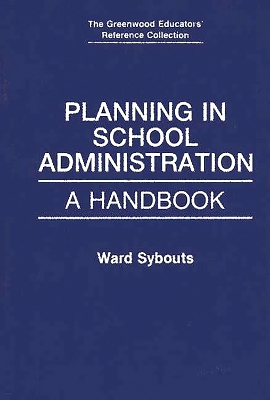Greenwood Educators' Reference Collection
2 total works
The Training and Development of School Principals
by Ward Sybouts and Frederick C Wendel
The school principalship is one of the most demanding and misunderstood jobs in American education. As the person in charge of the daily operation of a particular school, the principal is vested with enormous responsibility for the education of students, the supervision of personnel, and the adherence to numerous laws and policies. This professional reference provides practical information for K-12 principals about how to conduct their jobs in the most effective manner.
The practical information in the book is informed by a solid discussion of the history of the principalship and the characteristics of effective schools. The bulk of the volume provides valuable information on the legal and business concerns of the principal, the effective management of personnel, the importance of systems theory to effective planning, and the relationship between the school and the community. Throughout the volume, the authors stress that the principal is a leader and a visionary who empowers, rather than merely a manager who oversees tasks.
Because schools must operate in a changing environment, educators must manage change whether they wish to or not. Administrators must plan accordingly, and the best plans spring from a solid theoretical base. This comprehensive handbook provides that base. Sybouts draws on systems theory to develop effective approaches to strategic and operational planning in education. The text evolved from case studies of successful planning in local school districts and from a national survey of education faculty. Sybouts emphasizes that the human dimension of educational planning is paramount, and that leadership and vision are essential to the effective management of change.
The volume begins with a rationale for improved planning in educational administration. Sybouts then lucidly explains the fundamentals of systems theory and provides a theoretical frame for the rest of the book. He turns his attention to strategic and operational planning and explores the relationship between the two. He then discusses key planning techniques, including trend analysis, mathematical projections, and flow charts. The book closes with practical guidelines on how to manage change and implement planning in school systems. This handbook is a valuable reference for administrative planners and education professionals and is a ready source of both theoretical and practical information.

